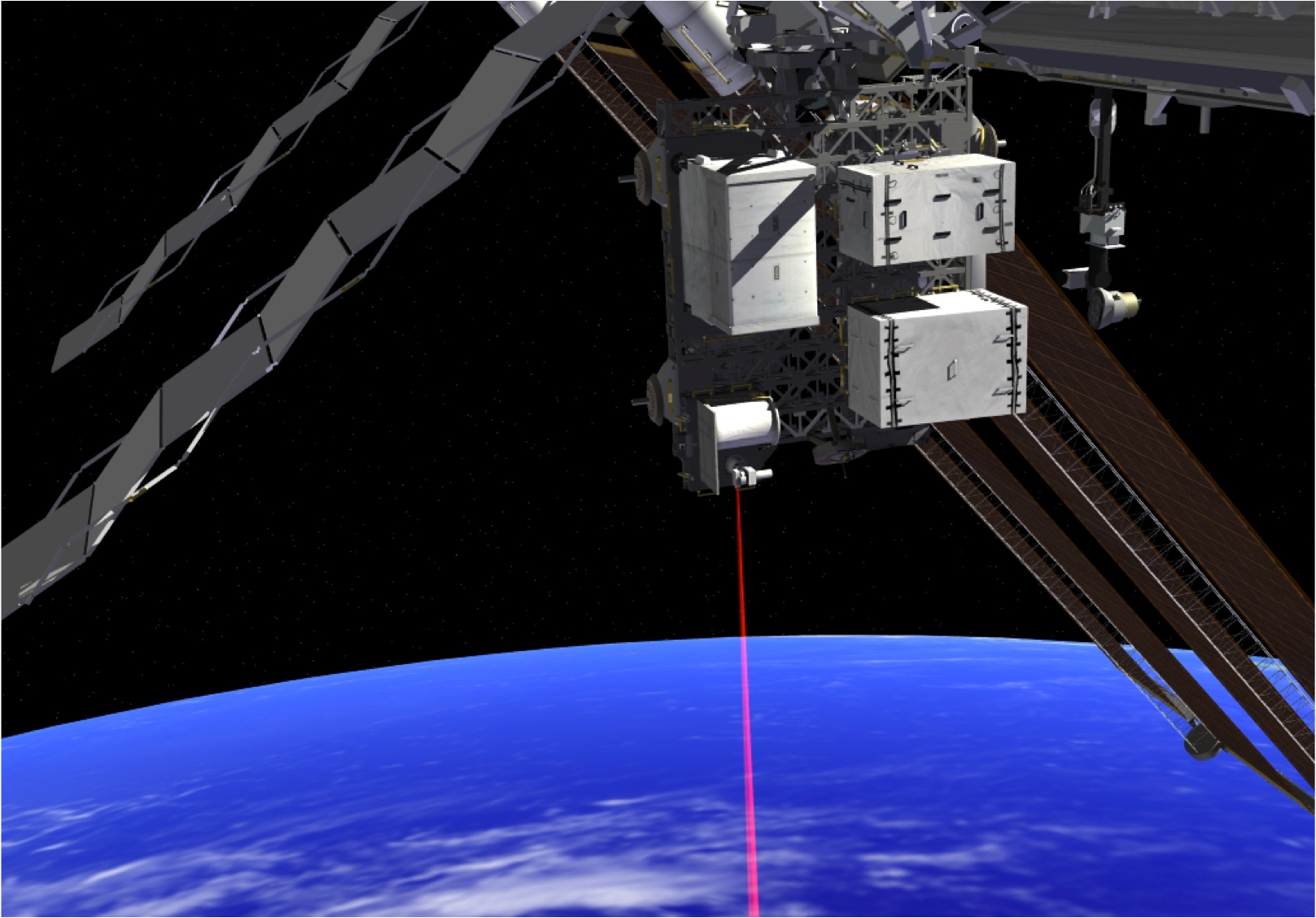International Space Station to beam video via laser back to Earth
April 15, 2014

This artist’s concept shows how the Optical Payload for Lasercomm Science (OPALS) laser will beam data to Earth from the International Space Station (credit: NASA)
NASA is preparing for an April 14 launch to the International Space Station aboard the SpaceX-3 mission to test NASA’s first space-to-Earth optical communication system.
The Optical Payload for Lasercomm Science (OPALS) system will demonstrate up to 50 megabits per second transmission, compared to 200 to 400 kilobits per second for many deep-space missions.
Future deep space optical communication systems will provide more than one gigabit per second from Mars, NASA says.
Fast laser communications between Earth and spacecraft like the space station or NASA’s Mars Curiosity rover would enhance their connection to engineers and scientists on the ground as well as to the public, NASA says.
However, this mission is only intended for testing. As the space station orbits Earth, a ground telescope tracks it and transmits a laser beacon to OPALS. While maintaining lock on the uplink beacon, the orbiting instrument’s flight system will downlink a modulated laser beam with a formatted video.
Each demonstration, or test, will last approximately 100 seconds as the station instrument and ground telescope maintain line of sight. It will be used to study pointing, acquisition and tracking of the very tightly focused laser beams, taking into account the movement of the space station, and to study the characteristics of optical links through Earth’s atmosphere. NASA will also use OPALS to educate and train personnel in the operation of optical communication systems.
NASA says the success of OPALS will provide increased impetus for operational optical communications in NASA missions, noting that “the space station is a prime target for multi-gigabit-per-second optical links.”
OPALS is a partnership between NASA’s Jet Propulsion Laboratory in Pasadena, Calif.; the International Space Station Program based at Johnson Space Center in Houston; Kennedy Space Center in Florida; Marshall Space Flight Center in Huntsville, Ala., and the Advanced Exploration Systems Division at NASA Headquarters in Washington.